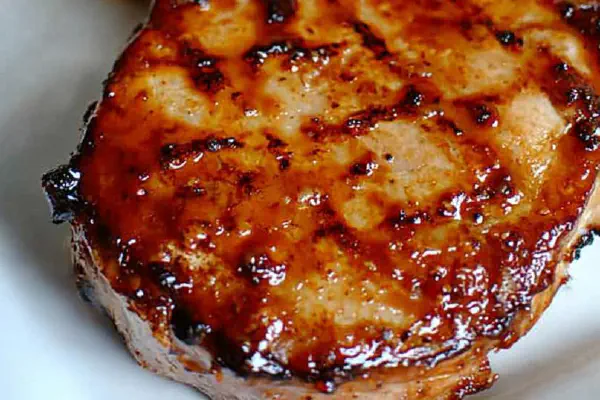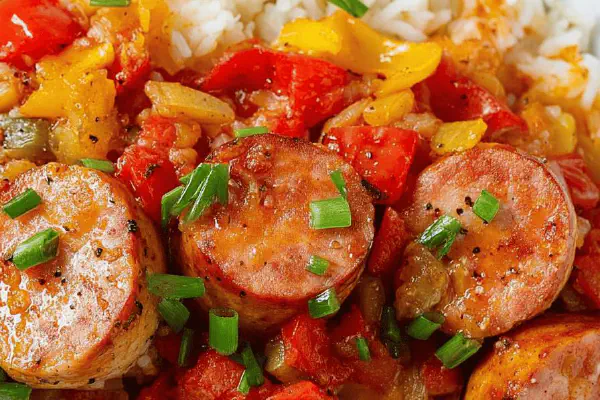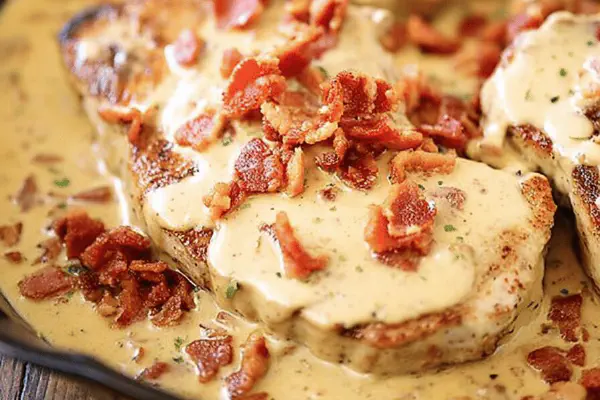Featured Recipe
Crispy Fried Pork Chops

By Kate
"
Thin pork chops, pounded ½ to ¾ inch thick, coated in a seasoned mixture of rice flour and cornmeal with salt, smoked paprika, black pepper, garlic granules, and dried minced onion. Dipped in beaten eggs, double-dredged for maximum crunch. Fried in hot oil between 345°F and 380°F maintaining temperature for crispy crust without greasy fallout. Flip when edges bubble and color deepens. Drain on kraft paper to absorb excess oil. Pork cooked through when juices run clear, no pink. Internal temp hits 166°F for safe eating. Eight servings. Crunchy, savory, with a touch of smoky heat.
"
Prep:
12 min
Cook:
20 min
Total:
32 min
Serves:
8 servings
pork
fried
southern
dinner
comfort food
Introduction
Pork chops need attention. Thickness matters. Pound them down so each chop cooks evenly. Too thick in spots, the outside burns before the inside’s done. Too thin, pork dries out, tough as shoe leather. Cornmeal in the coating adds gritty crunch that flour alone can’t deliver. Skip it, crust pales, and fried texture flattens. Heat control is king. Cast iron holds temperature steady. Oil under 345°F soaks into chops, heavy feeling. Go over 380°F, crust burns, bitter. Visuals and sounds—listen to the sizzle, look for golden flecks of cornmeal, touch crust edges with tongs. Shiny wet spots mean soft crust, keep frying. Rest chops off paper instead of paper towels if you want less steam, more crunch. Common mistake: flipping too often. One flip, topside done, bottom crispy, perfect crisp.
Ingredients
About the ingredients
Rice flour replaces wheat flour—it fries crispier without gluten’s chew. Cornmeal adds rustic crunch, but grit surprises some; use finely ground if concerned. Smoked paprika swaps regular to inject smoky aroma without adding chips or liquid smoke. Garlic granules directionally different from powder—they absorb better, no clumps. Dried minced onion adds bursts of sweet onion texture amid crust. Eggs act as glue and moisture. If allergic or out, buttermilk or whole milk plus mustard powder is an option, though alters flavor and texture of crust. Vegetable oil—canola or peanut works. Olive oil smoke point too low, burns flavor. Cast iron or heavy stainless helps stabilize heat unlike thin nonstick. Always check pork for thickness; even thickness cooks evenly, no burnt edges or raw middles.
Method
Prepping the coating
- Whisk rice flour, cornmeal, salt, smoked paprika, black pepper, garlic granules, and dried minced onion in a wide shallow bowl. Cornmeal adds crunch and a subtle sweetness. Rice flour keeps crust light and crisp—better than all-purpose flour here.
- Beat eggs in a second shallow bowl until completely mixed, no streaks. Easy to dunk chops.
- Lay pork chops between two sheets of parchment or plastic wrap. Pound evenly with a meat mallet. Target ½ to ¾ inch thickness, uniform so they cook evenly. No jagged thick spots or edges. No tears. Torn meat means uneven cooking and tough bits.
- In a heavy cast iron skillet or deep sauté pan, pour vegetable oil to about 1 inch depth. Don't skip a heavy pan; maintains temp better. Heat over medium-high to between 345°F and 380°F. Use a thermometer here. Too hot—burnt crust, raw center. Too low—greasy, soggy chops.
- Coat each pork chop on both sides with flour mixture. Then dip into eggs, making sure fully wet but no dripping. Dip again in flour mix, patting gently so coating sticks, but not so thick it falls off. Double dredge—helps crust stay intact during frying. Skip it, coating slides off, fat explosion.
- Drop one chop carefully into hot oil—should sizzle immediately. Avoid crowding pan. Fry 3-4 minutes per side. Listen for steady bubbling around edges, crust turns golden-brown with some darker pinpoints from cornmeal. Flip once crust releases easily from bottom, not sticking. Adjust heat as needed to keep oil 345°F–380°F. Use tongs, gentle flip, no splashes.
- Cook until no pink juices run when poked with fork or knife. Internal temp 166°F measured with instant-read thermometer. Timing varies slightly with chop thickness—rely on temperature, juice color, and crust color as cues.
- Remove chops with spider or tongs, drain on brown paper bags or thick kitchen paper towels. Paper towels absorb oil but can make bottoms soggy if left too long. Brown paper aids crisp retention. Rest 3 minutes—carryover cooking finishes internal temp, juices redistribute. Serve fast. Crisp fades with time.
- Dredge and fry remaining chops the same way. If oil starts smoking or browns dark bits too fast, lower heat. Skim bits from oil frequently to avoid burning flavors. Change oil if it smells acrid or darkens heavily during cooking.
Preparing chops
Frying setup and oil
Dredging technique
Frying process
Draining and serving
Repeating for remaining chops
Technique Tips
Step order optimized for efficiency and result: mixing dry then wet separately, pounding chops before dredging, heating oil while prepping coating. Double-dredging locks in seasoning, prevents thin coating from falling off during frying. Pound evenly, no tears—keeps juice in, meat tender. Maintain oil temp with thermometer—visual clues like consistent bubbling and slow crust deepening crucial. Avoid over-crowding pan; lowers oil heat, greasy crust. Flip once, no multiple flips or prod too often or coating breaks. Pork done when juices run clear; slow bubbling at edges; crust deep golden with brown flecks from cornmeal. Drain on brown paper, not greasy towels, to keep crust crisp. Resting allows carryover heat to finish cooking. Adjust frying times ± 1 minute to match thickness, watch sensory cues. Skim debris between batches; too many burnt bits ruin oil fresh taste. Use tongs or spider, slow gentle flips for crust integrity.
Chef's Notes
- 💡 Watch for that sizzle when chops hit oil. Should hiss loudly. If not, temp’s off. Monitor constantly. Thick crust means double dredging—so crucial.
- 💡 Pound chops gently but evenly. No uneven spots. They cook poorly. Avoid jagged edges too. Aim for uniform thickness. Keep meat juicy and tender.
- 💡 Monitor oil temperature closely. Too hot means burnt crust, raw inside. Too cold—soggy. Use thermometer. Optimal range is 345°F to 380°F. Adjust as needed.
- 💡 When frying, don’t crowd pan. Lower heat if too many in at once. Crust won't crisp. One flip only. Maintain that crunchy layer for best results.
- 💡 Rest fried chops for three minutes on brown paper. Let juices redistribute. Don’t leave on paper towels too long; they trap moisture—soft crust.
Kitchen Wisdom
What's best for flavor?
Cornmeal adds grit, flavor. Use finely ground if worried. Smoked paprika infuses smoky aroma.
Can I use other oils?
Canola or peanut oil works well. Olive oil burns too quickly. Consider heavy frying pans for heat stability.
What if my chops are too thick?
Pound evenly first. If you miss spots, inside’s raw; outside’s burnt. Consistency helps achieve that crunchy exterior.
How should I store leftovers?
Place in airtight container in fridge, 2-3 days max. Reheat in oven at low heat, keeps crust more intact.



